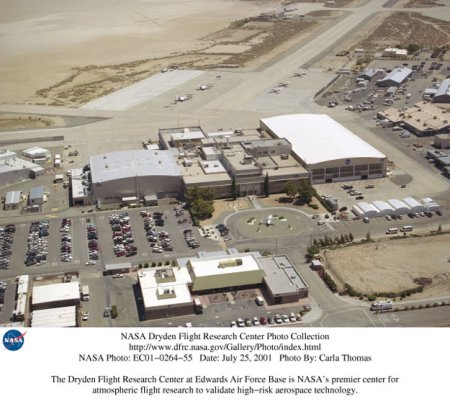Dryden Flight Research Center

Dryden Flight Research Center (DFRC) is NASA's foremost installation for atmospheric flight operations and flight research. Located at Edwards Air Force Base, Dryden uses a variety of specialized research aircraft and demonstrators to study high-speed and high-altitude environments. Among the aims of this work are to find ways of cutting long-distance flight travel times and develop new aircraft configurations and structures to increase agility.
DFRC's origins go back to 1946 when a small team of NACA (National Advisory Committee for Aeronautics) engineers came to Muroc Army Airfield (now Edwards AFB) to prepare for X-1 tests in a joint NACA–Air Force program. The following year NACA's Muroc Flight Test Unit was formed, which in 1949 became the NACA High-Speed Flight Research Station with Walt Williams as its chief. The center was eventually named after Hugh Dryden.
Over the years, all of NASA's high-performance aircraft and flight research vehicles have flown from here including all of the X-planes, the Lunar Landing Research Vehicle or "Flying Bedstead," and the Space Shuttle prototype Enterprise. Most recently, Dryden has been involved in test flights of the X-38 lifeboat for the International Space Station and various solar-powered aircraft.


